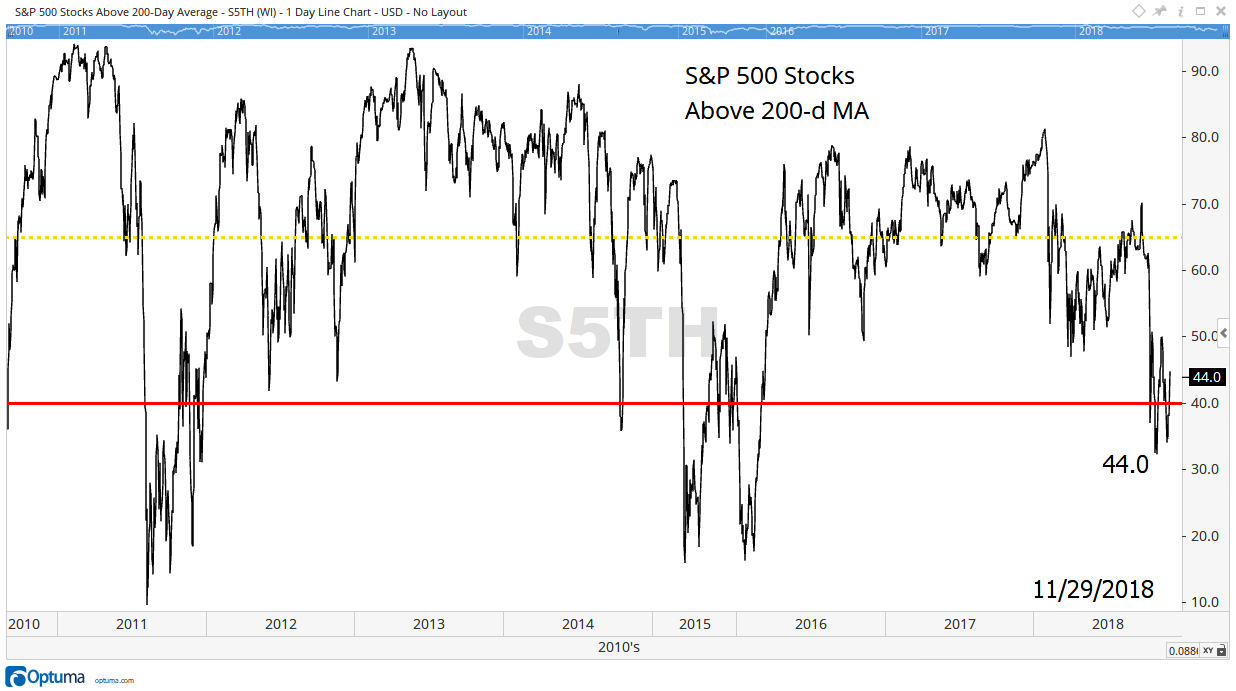The Federal Reserve sparked hope this week. Fed Chairman Jerome Powell indicated interest rates might not go much higher.
Traders bought stocks. But there’s no good reason for the buying.
The economy is still slowing. The Fed might not raise rates much more because of concerns the economy is slowing more than expected. So, Powell’s comments should scare investors.
The current state of the stock market should also scare investors.
Most stocks are still in downtrends. The chart below shows 56% of the stocks in the S&P 500 Index are in downtrends.

This is a chart showing the percentage of stocks in the index that are above their 200-day moving average (MA).
The 200-day MA is a popular way to define the direction of the trend. When the price is above the MA, the trend is up. A move below the MA marks the beginning of a downtrend.
When the percentage of stocks above the MA falls below 65%, the uptrend is weakening. Moves below 40% usually occur in extended downtrends.
The dip below 40% in 2011 was associated with a 21% decline in the S&P 500.
That wasn’t an official bear market because the Dow Jones Industrial Average only fell 19.2%. That’s just shy of an official bear market.
The S&P 500 fell 15.2% in 2015 when this indicator fell below 40%. Small-cap stocks fell 27% at that time, and tech stocks dropped an average of 19%.
There was one false alarm. In February 2014, the S&P 500 dropped 7% in one month.
Economic data indicated the economy was slowing at that time. But the Federal Reserve and European Central Bank propped the stock market up then.
Right now, the percentage of stocks above their 200-day MA is warning of weakness. It could be a false alarm. But central banks are worried about a recession.
They can give speeches trying to save stocks. But they don’t have any policy tools available.
It’s best to assume history will repeat. Expect a 20% decline in the stock market over the next few months.
Regards,

Michael Carr, CMT, CFTe
Editor, Peak Velocity Trader








